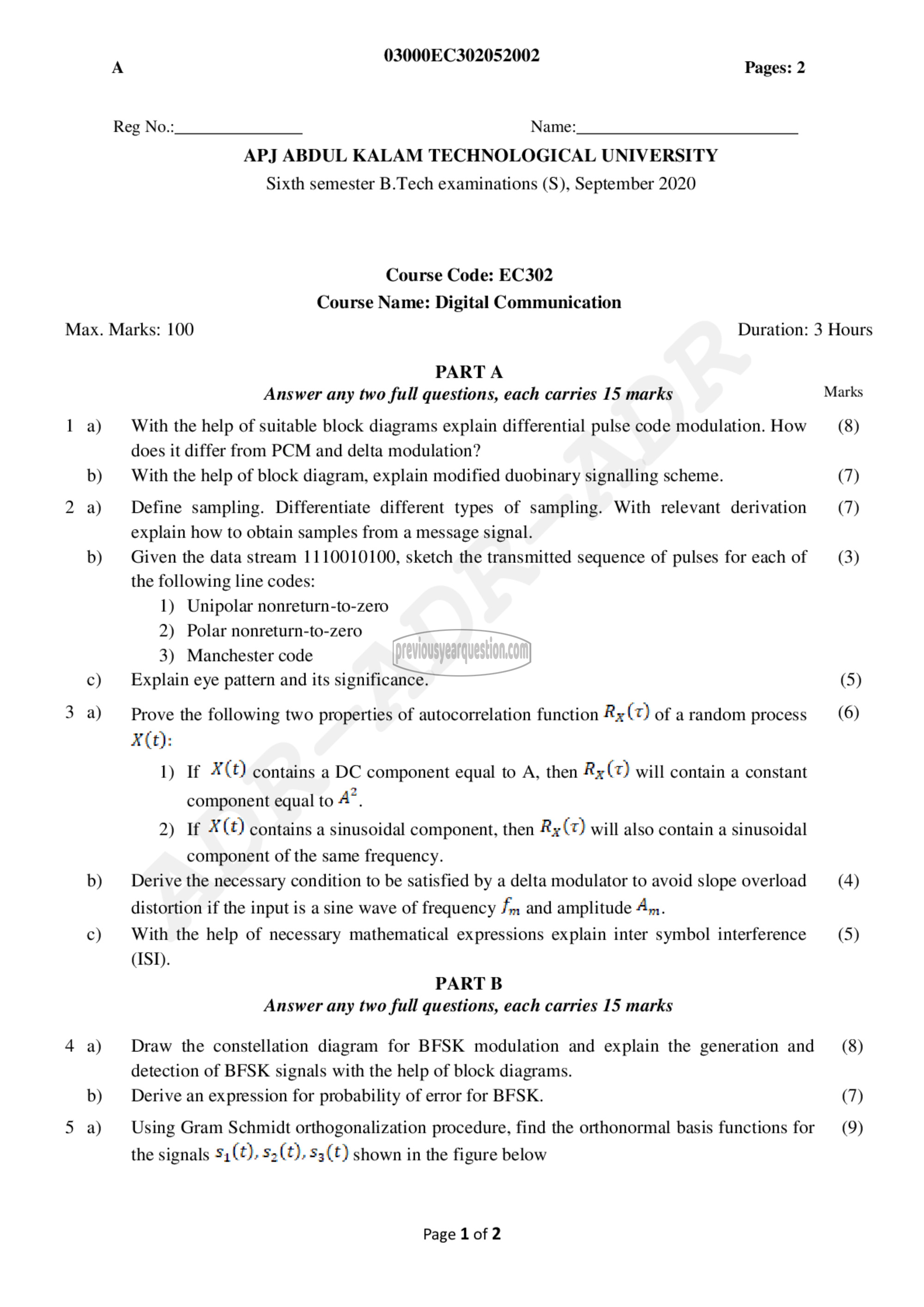APJ ABDUL KALAM TECHNOLOGICAL UNIVERSITY Previous Years Question Paper & Answer
Semester : SEMESTER 6
Subject : Digital Communication
Year : 2020
Term : SEPTEMBER
Scheme : 2015 Full Time
Course Code : EC 302
Page:1
۸ 03000EC302052002 Pages: 2
Reg No.: Name:
APJ ABDUL KALAM TECHNOLOGICAL UNIVERSITY
Sixth semester B.Tech examinations (S), September 2020
Course Code: EC302
Course Name: Digital Communication
Max. Marks: 100 Duration: 3 Hours
PARTA
Answer any two full questions, each carries 15 marks Marks
1 a) With the help of suitable block diagrams explain differential pulse code modulation. How (8)
does it differ from PCM and delta modulation?
b) With the help of block diagram, explain modified duobinary signalling scheme. (7)
2 a) Define sampling. Differentiate different types of sampling. With relevant derivation (7)
explain how to obtain samples from a message signal.
b) Given the data stream 1110010100, sketch the transmitted sequence of pulses foreach of (3)
the following line codes:
1) Unipolar nonreturn-to-zero
2) Polar nonreturn-to-zero
3) Manchester code
c) Explain eye pattern and its significance. (5)
3 a) Prove the following two properties of autocorrelation function R(T) of a random process (6)
X(t):
1) If 400) contains a DC component equal to A, then Rx (7) will contain a constant
component equal to A’
2) If X(t) contains a sinusoidal component, then R(T) will also contain a sinusoidal
component of the same frequency.
b) 19910 the necessary condition to be satisfied by a delta modulator to avoid slope overload (4)
distortion if the input is a sine wave of frequency fm and amplitude 4m.
c) With the help of necessary mathematical expressions explain inter symbol interference (5)
(151.
PART تا
Answer any two full questions, each carries 15 marks
4 a) _ Draw the constellation diagram for BFSK modulation and explain the generation and (8)
detection of BFSK signals with the help of block diagrams.
b) Derive an expression for probability of error for BFSK. (7)
5 a) | Using Gram Schmidt orthogonalization procedure, find the orthonormal basis functions for (9)
the signals പ. 52(t), 53 (४) shown in the figure below
Page 1 of 2
